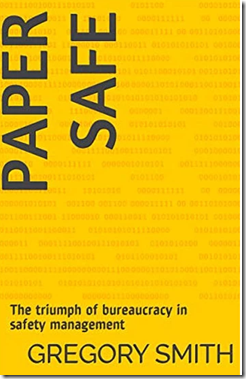Tick n’ Flick-Set n’ Forget

Tick n’ Flick-Set n’ Forget are co-joined heuristics people develop as habits for completing something as quickly as possible due to desensitization (https://safetyrisk.net/desensitisation-the-by-product-of-ill-conceived-safety-initiatives/; https://safetyrisk.net/a-case-of-desensitisation-what-would-you-do/ ). At the heart of both heuristics is the fundamental challenge of boredom by sameness and repetition.
The danger of Tick n’ Flick-Set n’ Forget is that a system for risk assessment looks done when it hasn’t. It is so easy to fill out the paperwork completely and in detail and still not have considered the risk associated with the task. This is because over time Safety has made the completion of paperwork an end in itself. The assumption is, if I see the paperwork completed such represents thinking in the field where the risks are present.
This is now such a problem that many audits are just paper audits eg. the Office of the Federal Safety Commission (OFSC). The best way to manage the OFSC is to shift sub-contractors away from site at times of audit and then get back to normal once the OFSC leaves. In this way everything is compliant, all safe on paper Tick n’ Flick-Set n’ Forget. This is fairly typical of safety auditing systems in general, many auditors without much skill in enquiry conversations, open questioning or reflective listening making the organization Papersafe.
One of the ways to counter this trend is to increase skills of supervisors, managers, safety people and auditors in people skills and engagement skills that don’t require measurement or orthodox ideas in understanding risk. Such skills are not part of the safety curriculum or AIHS BoK. So in a sense, the industry is developing people primed for Tick n’ Flick-Set n’ Forget. Then when something goes wrong everyone is bewildered and surprised how something slipped through the cracks.
Case Study Dreamworld
· How could it be that a large organization like Ardent Leisure could let things slip through the cracks? Easy: Tick n’ Flick-Set n’ Forget. (https://www.abc.net.au/news/2020-02-24/dreamworld-accident-inquest-coroner-findings/11993742).
· How can a company develop ‘Such a culpable culture can exist only when leadership from the [company] board down are careless in respect of safety?’ Easy: Tick n’ Flick-Set n’ Forget.
· At the time of the tragedy there were four safety officers employed at Dreamworld, how could such glaring issues in risk be missed? Easy: Tick n’ Flick-Set n’ Forget.
· Prior to the tragedy there were numerous audits over several years (pp. 127-157), how could such audits miss critical risks? Easy: Tick n’ Flick-Set n’ Forget.
· Why is it that there was a safety system in place including risk assessments using a risk matrix and still risks fell through the cracks? Easy: Tick n’ Flick-Set n’ Forget. Cracker, let’s get out those template documents and Tick n’ Flick-Set n’ Forget. Enquiry report p.72
· How do you get a score of 9 on a risk matrix (Greg Smith’s worst process in safety), a moderate risk on a ride that led to the deaths of 4 people? Easy: Tick n’ Flick-Set n’ Forget.
What is very clear from the Inquiry is that Dreamworld had some safety systems in place but a problem in culture. Tick n’ Flick-Set n’ Forget is a culture problem not a systems problem. With only time to tell and in time will tell, that organisations can have all the systems in place they like but if they don’t get culture right, systems in time simply regress to Tick n’ Flick-Set n’ Forget.



Do you have any thoughts? Please share them below